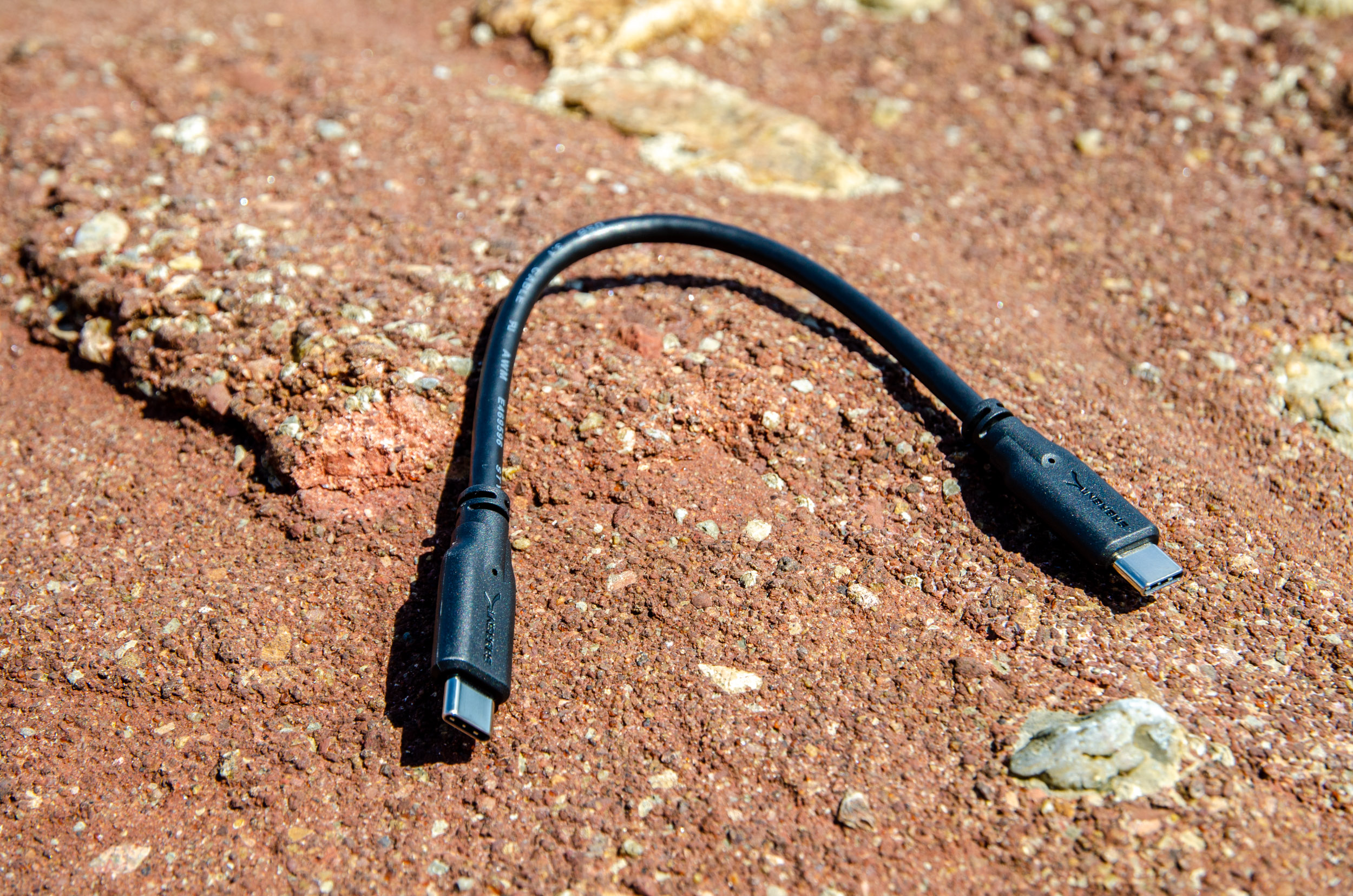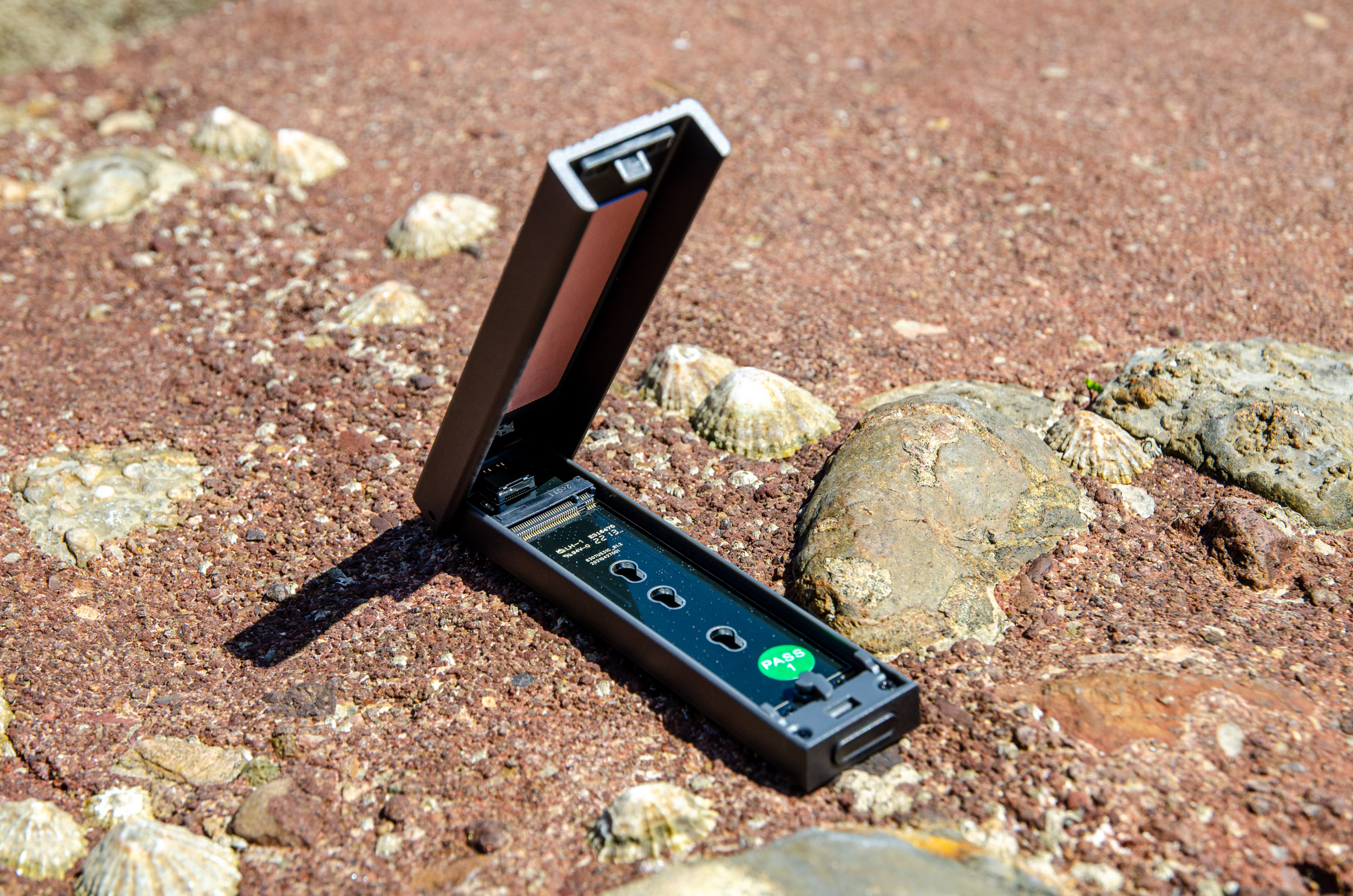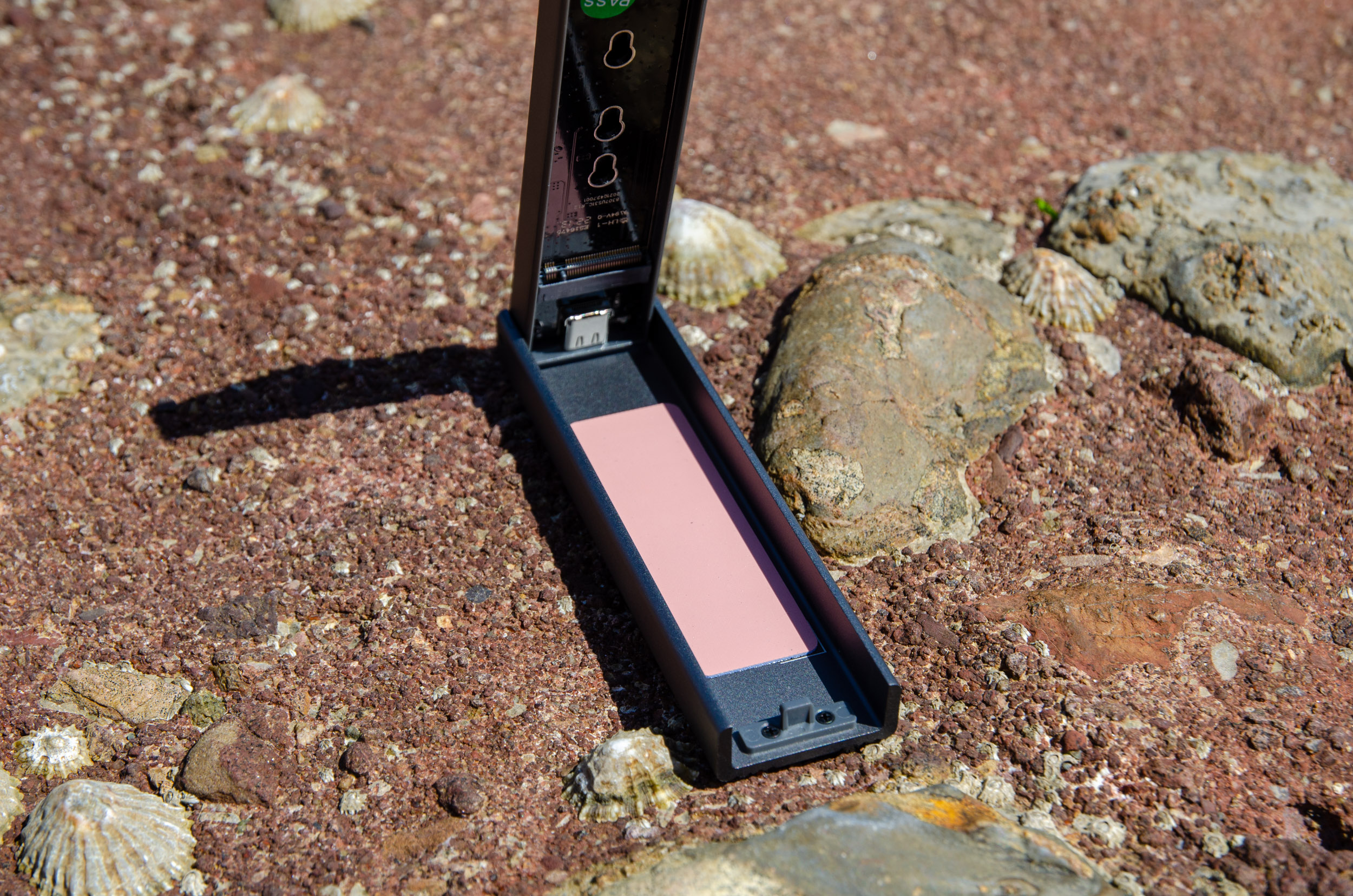There are plenty of portable and fast external storage solutions out there. However, if you are after a bit more flexibility, you can grab such a gadget from Sabrent, which let’s you choose any 2242/2260/2280 M.2 NVMe or SATA based SSDs, up to 8TB in size, that is plug and play via USB 3.2 Gen2 Type-C (10Gbps).
Sabrent’s commitment is to offer the latest technology and the highest quality consumer electronic products at an affordable cost to everyone. Since its founding, Sabrent has consistently delivered to market a full line of computer peripherals and accessories that incorporate style, quality and the latest technologies available.
Prices and Availability
*Update 18.08.2022 - Check the video review as well!*
Highlights and Specification
*Courtesy of their website.
* 100% Tool-free, quickly install and remove SSDs without any tools.
* Ultra-slim aluminum case with ABS frame. Sleek, durable, and convenient.
* M.2 form factor compatible with both SATA and NVME in sizes: 2242/2260/2280.
* USB 3.2 supports data transmission speeds of up to 10Gbps for steady and efficient data transfer.
* UASP and TRIM support.
* Max Capacity: 8TB
* No additional drivers required. Bus powered. Does not need an external power supply. At up to 1000MB/s, Data copy and transferring will be done in in no time.
Dimensions:
* Length 4.59 in.
* Width 1.24 in.
* Height 0.5 in.
* Weight 2.3 oz.
Package Contents:
* USB Tool-Free Enclosure
* 8″ USB Type-C to Type-C cable
* User manual
Visual Inspection
Packaging and branding is on point as always with any Sabrent products.
Protection is excellent thanks to this divider foam.
Accessory wise, you get a quick installation guide, a Sabrent branded USB 3.2 Gen2 Type-C to Type-C cable that is approximately 25mm long and a rubber spacer if you install the shorter M.2 formats.
The Sabrent enclosure it made of aluminium with a sleek and minimalist design. The front carries the Sabrent logo while the back has the serial number and product code.
On the I/O side, this is where you plug the Type-C cable and right next to it, that hole is the activity LED (which turns blue).
This is how you open the enclosure, just press this button and thanks to its hinged designed, access and thus installation is a breeze.
Just slide in your M.2 drive and then lock it into place via the plastic tab. If you are installing the shorter format M.2s (2242 or2260), use the included rubber pad.
This is why the enclosure will cool your drive because it will transfer heat via this thermal pad and thus the whole unit becomes a heantsink.
Overall, this is such a handy item to have since it takes so little space and it’s versatile.
When in use, this LED will be on and flicker when there is a transfer occuring.
Testing methodology
* The external Sabrent enclosure was connected to the native USB 3.2 Gen2 Type-C port of the ASUS B550-I STRIX motherboard which is capped at 10Gbps (up to 1250 MB/s).
* Synthetic and real life big file transfer tests - a game folder of 108GB of mixed files and a single 15GB .mkv video file to test the burst speed and the SLC cache if present.
* All SSDs were secure-erased before our tests started.
* Between tests, drives are left idle for 1 minute to allow them to flush and reorganise their internal data.
* Steps have been taken to ensure that the CPU’s power-saving features don’t interfere with any of our results. All of the CPU’s low-power states have been disabled.
* In order to minimise random variation, each of the real-life performance tests are run a few times with reboots in-between tests to reduce the impact of disk cache.
* (SATA SSDs only) Make sure you use a SATA 6Gbps capable motherboard and a matching cable to avoid bottle-necking. Then double check in the BIOS that you have the AHCI mode activated for another maximum performance tip.
* For the Gen4 x4 M.2s, you have to make sure you have a compatible motherboard that accepts and delivers the new bandwidth. Otherwise, it will work only in Gen3 x4 mode.
* For AMD users, make sure you update your motherboard chipset drivers from here.
Hardware used:
- CPU: AMD Ryzen 5 5600x
- CPU Cooling: SilentiumPC Navis F240 AIO
- Motherboard: ASUS ROG STRIX B550-i Gaming mITX @ BIOS 2803
- Boot SSD: Samung 970 PRO 1TB M.2 Gen3x4 MLC PCIe NVMe 1.3
- Video card: ASUS GTX 1080 STRIX A8G
- PSU: Corsair SF750 SFX Platinum
- Case: Phanteks Evolv Shift XT ARGB mITX
Other drives used:
- Sabrent Rocket 2TB M.2 Gen3x4 TLC PCIe NVMe 1.3
- Samsung 860 QVO 1TB QLC SATA 2.5″
Software:
- Windows 10 Pro x64 Version 21H1
- HD Tune Pro v5.70
- ATTO v4.01
- Crystal Disk Mark v7.0.0
- HWMonitor v1.43
Testing, Results and Analysis
HD Tune Pro – which is a hard disk / SSD utility with many functions. It can be used to measure the drive’s performance, scan for errors, check the health status (S.M.A.R.T.), securely erase all data and much more.
So, the USB 3.1 Gen2 tops at 10Gbps and since the testing Sabrent Rocket 2TB Gen 3.0 x4 NVMe drive is rated up to 3400 MB/s read and 2750 MB/s write, we see that the Sabrent Enclosure is offering almost the bandwidth that the motherboard supports.
Moving to the next utility - Crystal Disk Mark – this one is designed to quickly test the performance of the drives.
The benchmark maxes out the available bandwidth on both read and write tests and thus reconfirming the advertised total possible speeds.
To conclude the synthetic tests, here is ATTO which is another performance measurement tool to test any manufacturers RAID controllers, storage controllers, host bus adaptors (HBAs), hard drives and SSD drives. Nothing changes since Crystal Disk Mark.
Both the burst (15GB) and large folder with mixed files transfer test (108GB) display a full flat consistent line because at these speeds, we are writing at the native TLC cells’ speeds and thus the results are excellent.
Now let’s inspect the operating temps. This is a tricky one since you can’t read the S.M.A.R.T info fully when the drive is in the enclosure (or most M.2 external enclosures for that matter). The only way is with a thermal gun (which we don’t own) or a (laser) thermometer (which we do).
So, the Sabrent Ropcket 2TB M.2 NVMe SSD when installed in the testing rig, with an ambient of 26°C and minimal airflow inside the case, it reached 73°C when benchmarking via Crystal Disk Mark. When the same drive was inside the Sabrent external enclosure, in the same test, we recorded on the surface of the heatsink around 61°C. Thus it proves it really works when it comes to effective heat dissipation by lowering the temperature by 12°C ! Mind you this is the surface of the heatsink and take a few degrees for margin of error for the actual inside temp and the drive is not working at full bandwidth, but nonetheless, it’s a good result.
Conclusion
This gadget from Sabrent is truly a jack of all trades when it comes to the freedom of choosing your desired M.2 SSD and then transform it into an external device. It stands out because it’s 100% tool-free thanks to its hinged design, it can handle both NVMe and SATA based SSDs of any of the most popular sizes (2242/2260/2280) while keeping the drive cool, which is the cherry on top. The only negative if you will, is the support of the 10Gbps bandwidth. Overall, for the asking price, you can’t beat it.
The good:
+ Great build quality
+ Amazing value for money
+ The metal enclosure acts as a big heatsink
+ Plug and play nature
+ Tool-free design
+ Supports all the popular M.2 size formats
+ Support both NVMe and SATA based M.2 SSDs up to 10Gbps
+ Can handle drives up to 8TB in size
The bad:
- Only USB 3.2 Gen2 (10Gbps)
Glob3trotters “Excellent” Award 5 out of 5


































